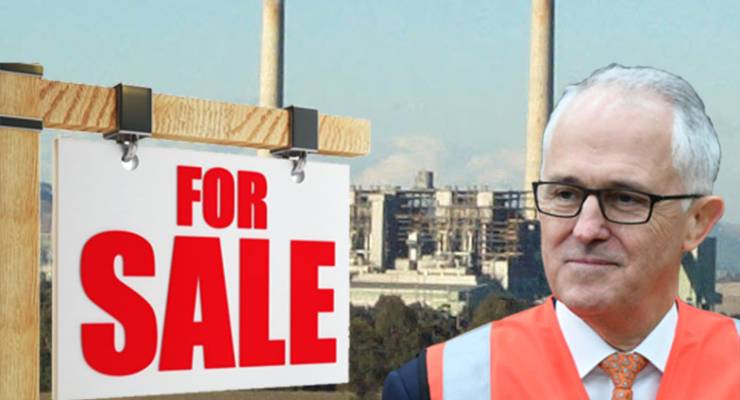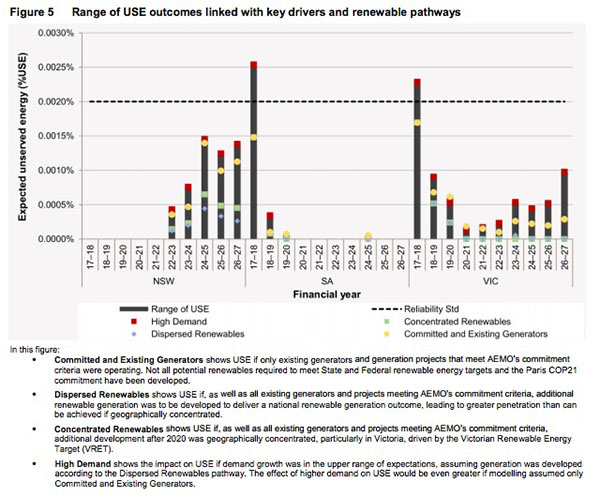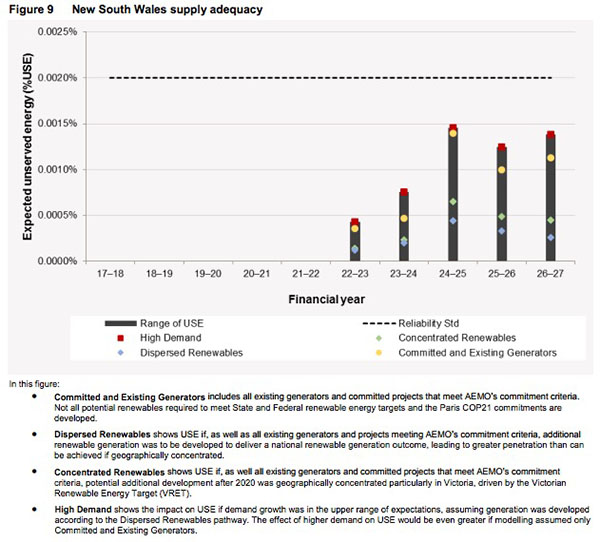
Is it possible that the Liberal Party is so obsessed with burning coal that any resolution of the climate wars is impossible, no matter how much Labor offers to compromise and shift policy?
It’s a valid question after yesterday afternoon’s bizarre turn of events in which the Prime Minister was publicly contradicted by the head of a major Australian company over claims made in the wake of the release of the Australian Energy Market Operator’s annual Electricity Statement of Opportunities and its observations about AGL’s old Liddell power station in NSW, which is scheduled to close in 2022.
“The Energy Minister and I are already in discussions with the owner of Liddell, AGL, about how we can ensure that that power station stays in operation for at least another five years after 2022,” Turnbull told Parliament in question time at 2.04. At 4.59, the head of AGL, Andy Vesey, shot that down in flames when he chipped Tony Abbott for crowing about coal-fired power.
A panicked Turnbull then, according to media reports, rang Vesey, and held a doorstop before entering an evening function at the Great Hall in Parliament to tweak his story, saying about Vesey: “He says AGL wants to get out of coal, but he has said that he is prepared to sell to a responsible party, and that’s what we’re talking about.”
Problematically, however, AGL this morning contradicted the Prime Minister for a second time in less than 24 hours, telling the Australian Stock Exchange “the company has made no commitment to sell the Liddell Power Station nor to extend its life beyond 2022.”
[The Australian’s clean coal magic trick]
But let’s assume AGL is happy to sell. Who is going to buy this asset, the effective life of which would be over, in order to keep spending money to operate it? There is speculation another company will stick its hand up this afternoon. But what incentives will be given to it to buy such a lemon? Turnbull twice refused this morning to rule out spending taxpayer money on Liddell either to acquire it or to somehow “facilitate” its purchase.
The Prime Minister insists keeping Liddell going is necessary because the Australian Energy Market Operator report forecasts that the risk of blackouts will increase after Liddell’s scheduled closure. As Abbott’s reaction demonstrated, of course, coal advocates will always find a reason to insist that we must continue to burn coal to keep the lights on.
The problem with Turnbull’s justification is that — despite what you might have seen in other media reports — the AEMO report actually shows that it’s not necessary to keep Liddell going. This is the key chart, showing the range of “USE” outcomes. USE is unserved energy — the shortfall between what consumers want and what the system can provide. Under current standards, USE is not supposed to exceed 0.0020% of consumption per region.
The only period in the next decade when USE will exceed the designated threshold is in South Australia and Victoria this coming summer. How is that risk being addressed? AEMO says “this risk is being addressed by the South Australian Government’s Energy Plan developing additional diesel generation and battery storage, and AEMO pursuing supply and demand response through the Reliability and Emergency Reserve Trader provisions”.
But what about Liddell? Why is Malcolm Turnbull trying to hawk a used coal-fired power plant around corporate Australia? AEMO’s report shows that even under a high-demand scenario, NSW won’t even come close to the USE threshold after Liddell closes.
The only circumstance in which NSW goes over the USE threshold is if another coal-fired power station, one currently not scheduled for closure, shuts down — that (unsurprisingly) causes a big spike in predicted USE. But as the report shows, USE will be a small fraction of forecast levels if, in addition to the closure of Liddell, “additional renewable generation was to be developed to deliver a national renewable generation outcome” (that also applies if another coal-fired power station closes as well as Liddell).
[Finkel review reveals coal fetishists’ struggle with basic maths]
But the government’s instinct is to reach for coal as a solution — coal funded, inevitably, by taxpayers.
One more irony in all this, especially for Turnbull and his Energy Minister Josh Frydenberg, both of whom were happy to serve in the climate denialist Abbott government while it trashed investment in Australian energy infrastructure: if coal advocates want to use the AEMO report as justification for propping up coal, consider what it identifies as the biggest threat to Australia’s energy security:
“The overall responsiveness and resilience of the system is at risk from increased vulnerability to climatic events, such as extended periods of high temperatures, and the risk of loss of, or reduction in output of, major generation units…”
Sometimes, it seems, it’s convenient for climate change to exist even for denialists.










If Turnbull, Abbott & their party are sold on the idea of Liddell being viable why doesn’t the Liberal Party buy it? They could not identify a more ‘responsible party’ to acquire it than their very own. And if coal burning is such a brilliant industry (as the Coalition claims) may the Liberal Party reap the financial rewards of their canny investment.
Yes, I quite like that idea. Though it may be a bit circular, as it seems that the mining industry, has already bought the Liberal Party?
Circular, yes… but perfectly symbiotic.
I’m not really sure about that? If you have two parasites feeding off each other, there may be a catch somewhere?
The Worm, Ouroboros springs to mind – a perpetual notion machine?
Evidence not required.
122(?) million of our $tax to indulge Limited News Party their “unexpected” and “unforseen” survey fetish : what’s a few more million to buy a power station – and keep the profits rolling to their benevolent benefactors in the coal industry?
Obsessive compulsive disorder probably explains this policy.
5 years away, how much renewables are going to be built in that time, and how much technology going into converting that to baseload.
Of course, we should build a nuclear power station. In 5 years it could get to the first stage of pre-planning, which preceded the decades of protests from anyone who lives within cooee of suggested sites, and the decade plus long build time and over-runs.
Kumonn, Brekky – you know that Dodger will feel obliged to expectorate.
It is clear that Malcolm either sold his soul to the devil – or the coal industry. He has so reversed himself that he has lost himself and any faith I once had in him.
Metamorphosis in reverse – from butterfly to garden-eating pest …
That’s a big call John – it assumes that he, a lawyer, had a soul to sell.
Wasn’t South Australia blacked out in February 2017 during the NSW heat wave because it was too hot for Liddell Power Station to operate at any more than 33% capacity. So rather than black out Sydney or Tomago aluminium refinery, South Australia was blacked out instead
Good reminder, Billie – ENRON’s load shifting schematic lives. It LIVES!